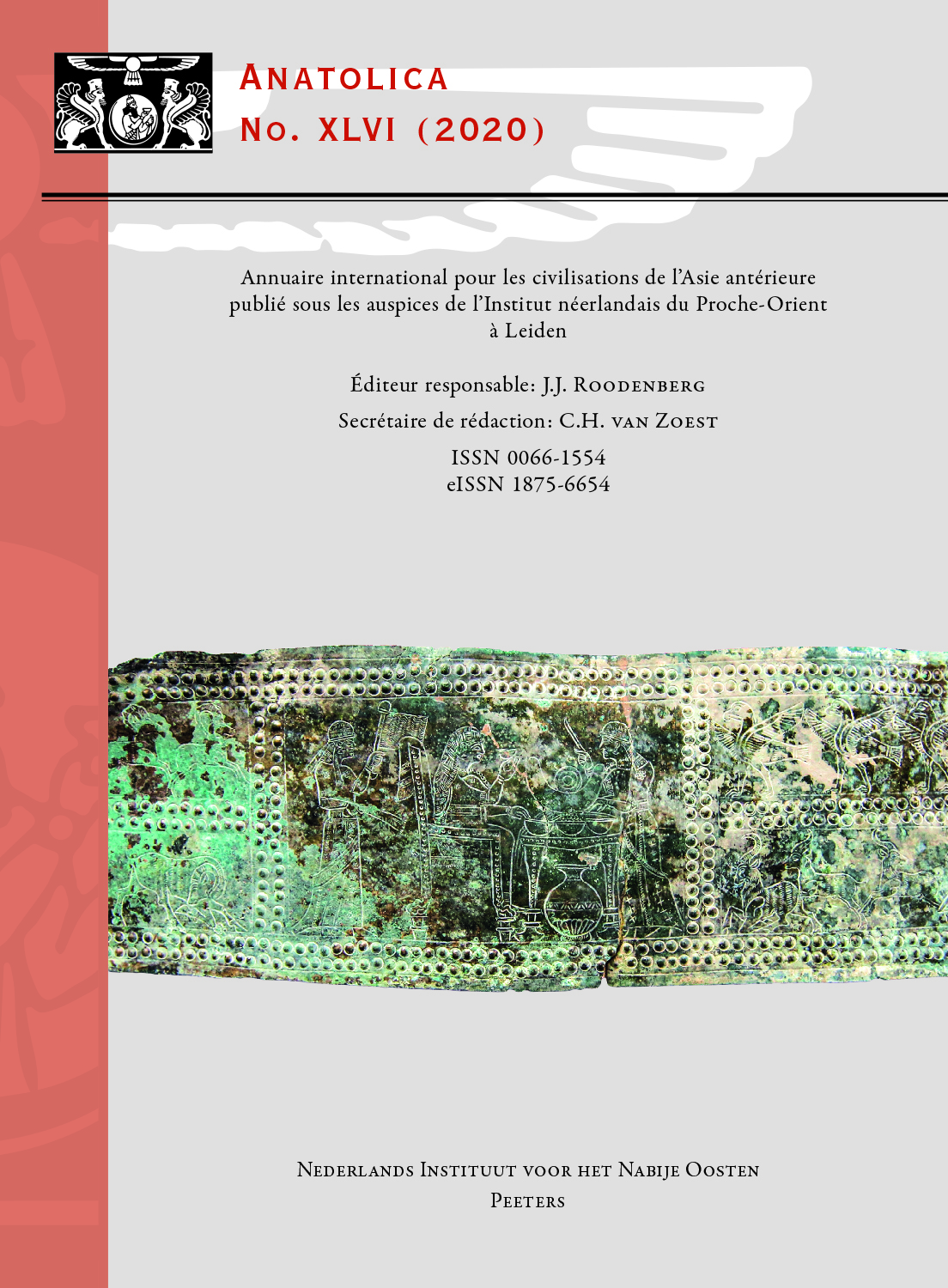 previous article in this issue previous article in this issue | next article in this issue  |

Preview first page |
Document Details : Title: The 2017-2018 Seasons at Çadir Höyük on the North Central Plateau Author(s): STEADMAN, Sharon R. , MCMAHON, Gregory , ŞERIFOĞLU, T. Emre , CASSIS, Marica , LAURICELLA, Anthony J. , HACKLEY, Laurel D. , SELOVER, Stephanie , YILDIRIM, Burcu , ARBUCKLE, Benjamin S. , VON BAEYER, Madelynn , HEFFRON, Yağmur , TARDIO, Katie , ADCOCK, Sarah , DINÇ, Emrah , ÖZGER, Gonca , SELVI, Bengi , OFFUTT, Stephanie , HARTLEY, Alicia Journal: Anatolica Volume: 45 Date: 2019 Pages: 77-119 DOI: 10.2143/ANA.45.0.3287002 Abstract : The Çadır Höyük mound is located in Yozgat Province, approximately 16 km from the city of Sorgun. Work commenced at the site in 1993 with an intensive surface survey, followed by excavation beginning in 1994. The deep sounding (excavated from 1994-2001) demonstrated that occupation stretches back to at least 5200 cal. BC; excavations on the mound summit indicate that occupation continued until a final abandonment perhaps in the 13th century CE. No gap in occupation of the mound over some six thousand years has been detected. The findings presented here derived from our work in three main periods represented at the site: the Late Chalcolithic exposure (ca. 3800-3500 BCE) located on the lower southern slope, the second and first millennium BCE, excavated in several areas of the site (the western slope work is presented here), and the Byzantine occupation, ca. 6th-13th centuries BCE on the mound summit, including mention of possible Roman architecture discovered in the 2018 season. The 2017 season provided some major discoveries, including three important child burials in the Late Chalcolithic area, a new gate and entryway into the Byzantine summit area, and a possible chapel. The 2018 season was devoted to further exploring these and other discoveries made in previous seasons in an attempt to solve major questions in preparation for a planned study season in 2019. By the close of the 2018 season we had achieved many of our goals; our work and interpretations are presented herein. |
 |


